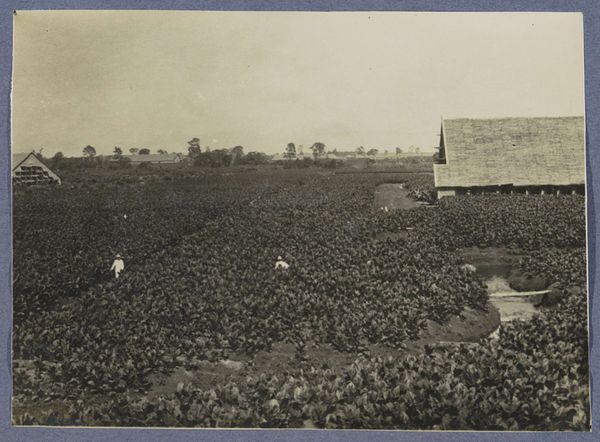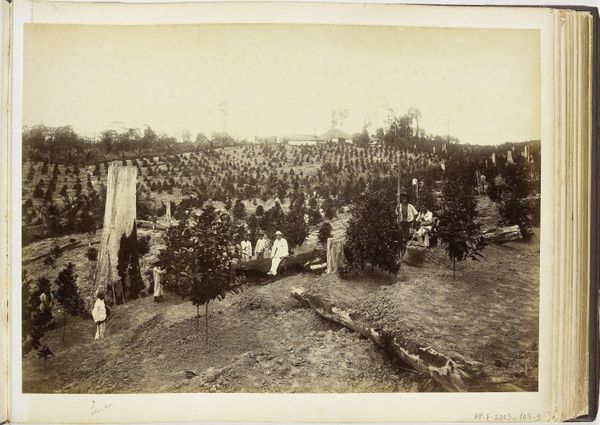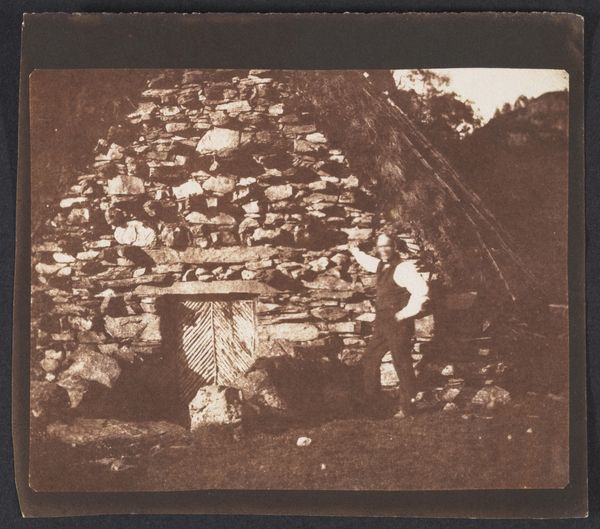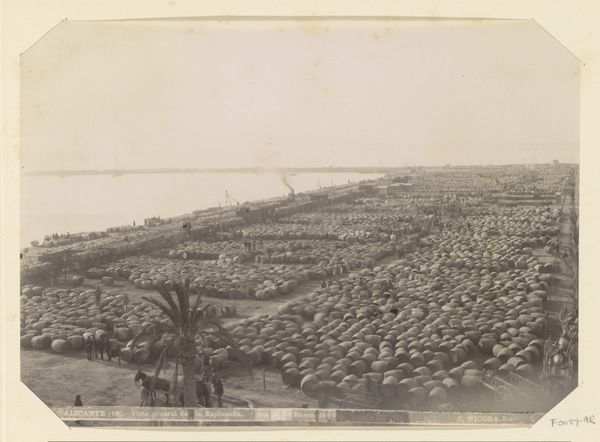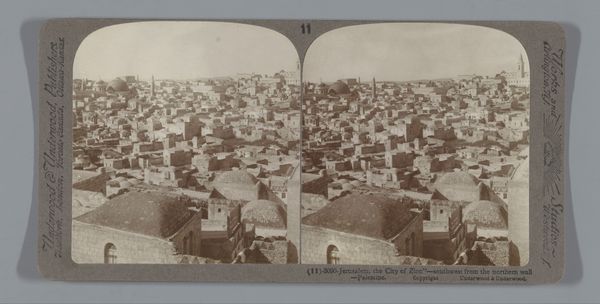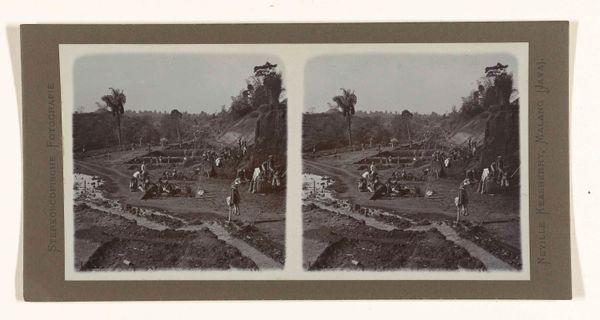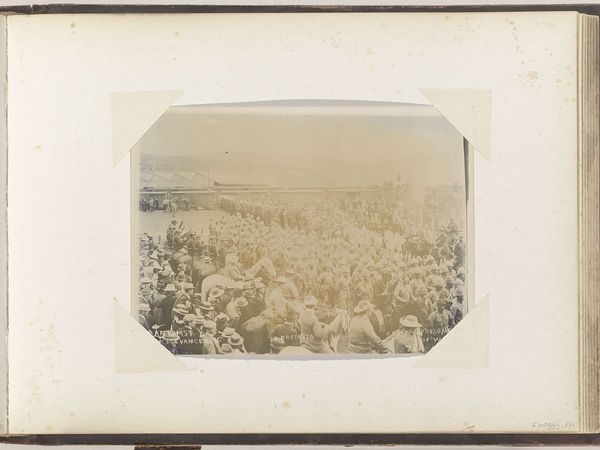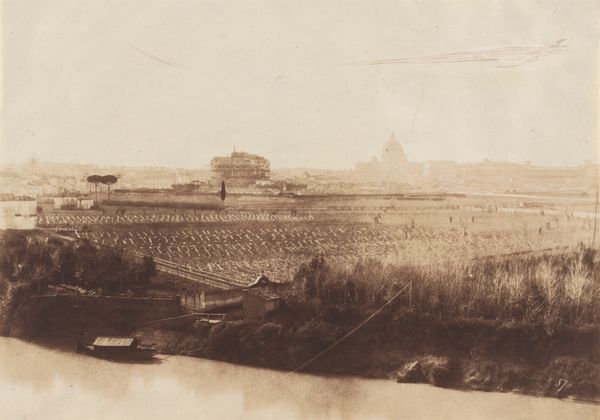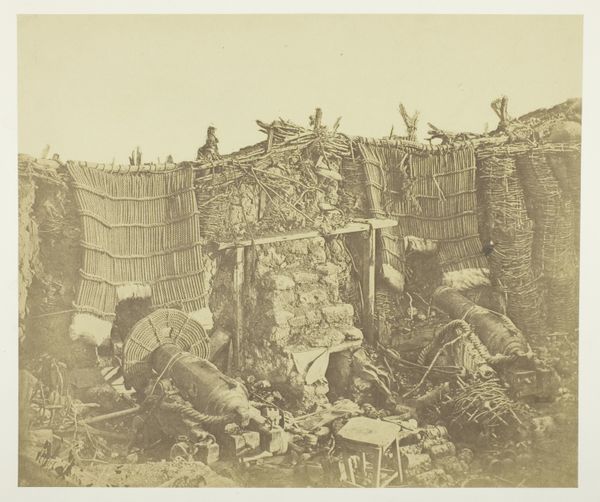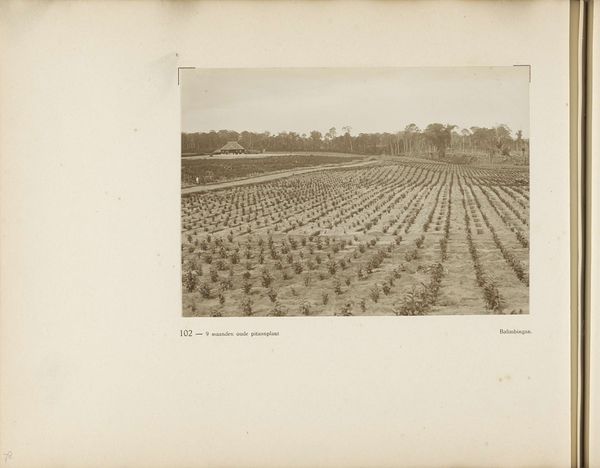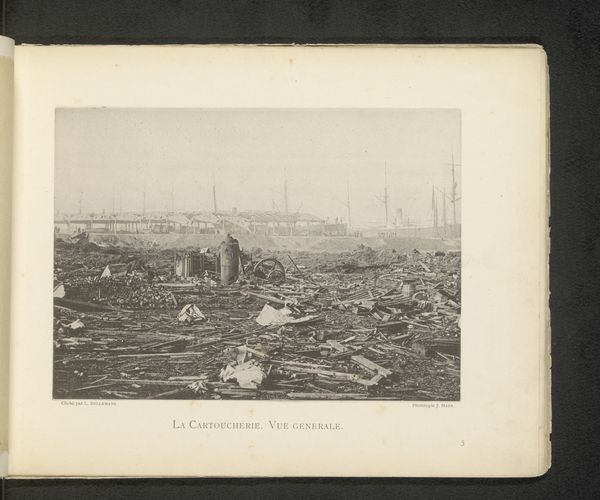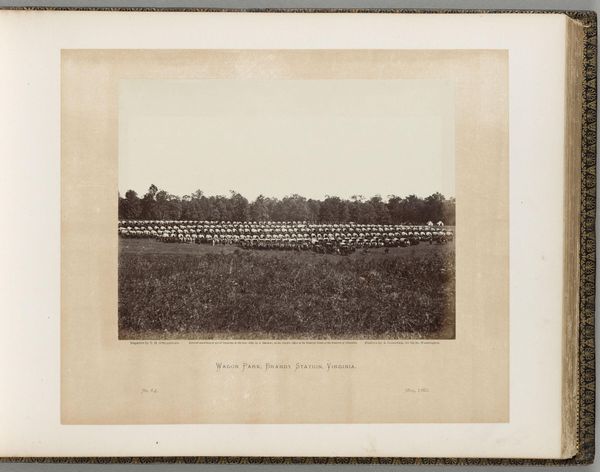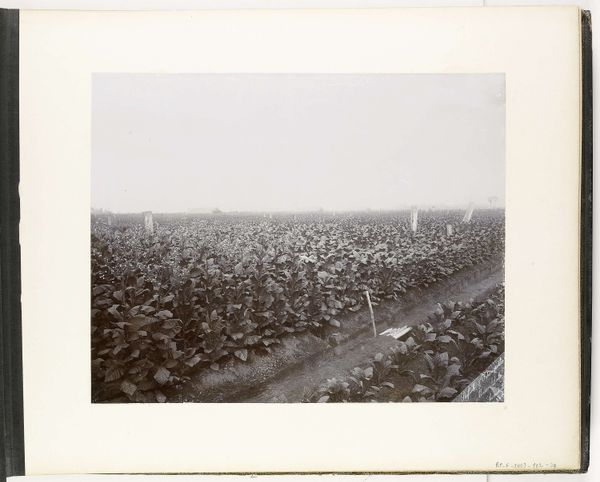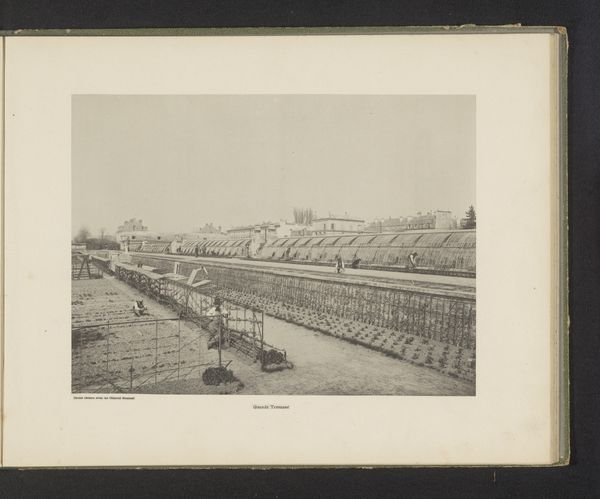![[Cemetry of MESHED] by Luigi Pesce](/_next/image?url=https%3A%2F%2Fd2w8kbdekdi1gv.cloudfront.net%2FeyJidWNrZXQiOiAiYXJ0ZXJhLWltYWdlcy1idWNrZXQiLCAia2V5IjogImFydHdvcmtzLzA5OTk2ZmUwLWRlOWYtNDY3ZC1hM2EzLWFkYjc3YmYzNWU0ZS8wOTk5NmZlMC1kZTlmLTQ2N2QtYTNhMy1hZGI3N2JmMzVlNGVfZnVsbC5qcGciLCAiZWRpdHMiOiB7InJlc2l6ZSI6IHsid2lkdGgiOiAxOTIwLCAiaGVpZ2h0IjogMTkyMCwgImZpdCI6ICJpbnNpZGUifX19&w=3840&q=75)
photography, gelatin-silver-print
#
landscape
#
photography
#
gelatin-silver-print
#
19th century
#
charcoal
#
realism
Copyright: Public Domain
Editor: This gelatin-silver print, “[Cemetry of MESHED],” from between 1840 and 1869, offers such a stark view of a landscape. It feels almost overwhelming in its depiction of so many headstones. How do you approach a work like this, given its historical context? Curator: I immediately look to the materials and processes involved. The gelatin-silver print itself speaks to a particular moment in the industrialization of image-making. How did this technology affect the perception and representation of death and remembrance at this time? Think about the labor involved in preparing the materials, taking the photograph, and then producing prints of this scale. Was it a single photographer or multiple hands? Editor: That’s fascinating. I hadn’t considered the industrial aspects. I was mainly focused on the somber, reflective mood of the piece, but you are right. So the mass-produced nature of photography changes how we engage with mortality? Curator: Precisely. Consider the accessibility and replicability of this image versus a hand-painted memorial. Photography democratizes documentation but also risks desensitizing viewers through sheer volume. The question is, who had access to photography at that time, and how did they utilize the materials? Further research is required to address what social functions this image may have had at the time it was created and consumed. How does the gelatin silver printing process affect our reception of the landscape? Editor: That's such a compelling consideration. The idea that this photographic process could both monumentalize and diminish is really making me think about the tension inherent in mass production. Curator: Yes, we can then think about the materiality of the final piece. Its availability as a print shifts how the act of remembrance operates within a society increasingly shaped by industrial outputs. Editor: Thank you, seeing the materials as integral to the meaning, not just as a medium, has really expanded my understanding of this work. Curator: And understanding the processes behind creation makes us appreciate the complexities interwoven with this piece’s original setting.
Comments
No comments
Be the first to comment and join the conversation on the ultimate creative platform.
